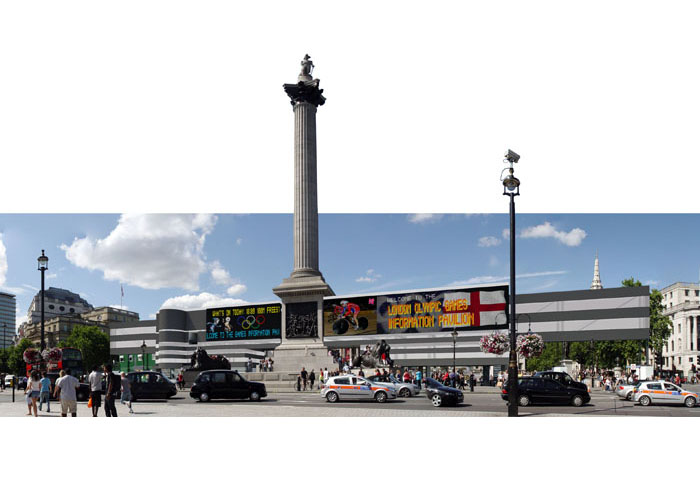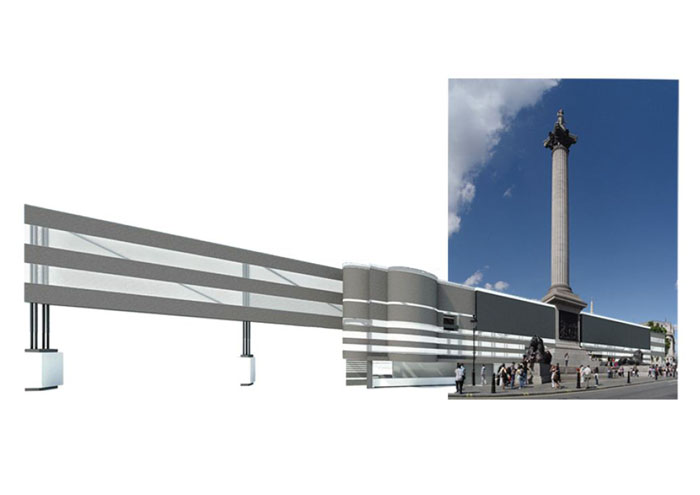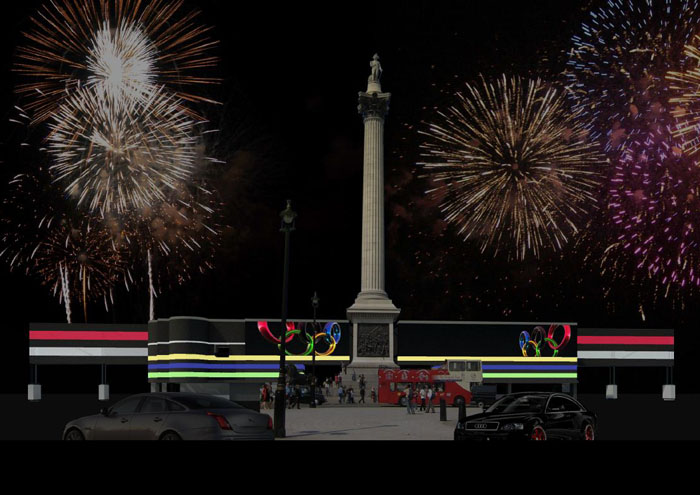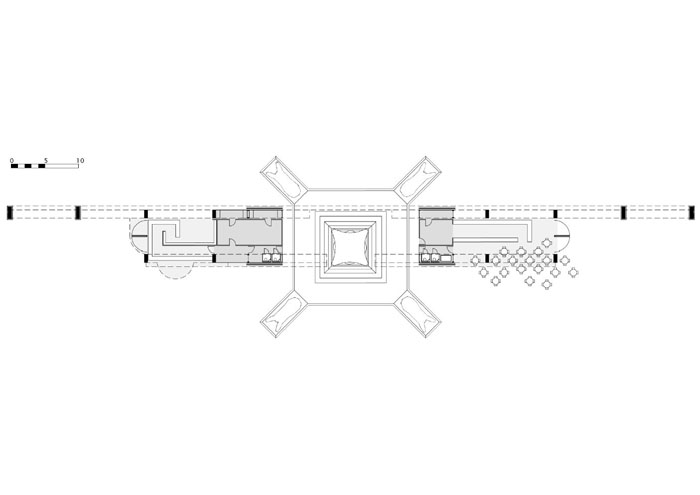London Olympics Information Pavilion Competition
This proposal for the London Olympic Games Information Pavilion locates the temporary structure on the prominent Southern edge of Trafalgar Square, in an attempt to make the largest possible visual impact in the city. Accordingly, the pavilion’s modest 250m² program has been stretched out across the width of the square, with three large LED screens providing multiple and simultaneous feeds of up-to-date visitor information, news, media coverage and Olympic Games footage.
The building directly engages Nelson’s column and the square as part of its composition. To the North, the pavilion defines and contains the space of Trafalgar square: a massive 100m long band of LED screens reinforce the symmetry established by the façade of the National Gallery. To the South, two further screens make evident the shift in symmetry of the Charles I statue at the top end of Whitehall, which sits slightly off axis with the Nelson’s column, and marks the centre of London. This pair of screens pushes towards the centre of the building to meet the column pedestal, juxtaposing live vision of the national rivalries played out in Olympic competition, with past military battles between foreign opponents. By including the column, the pavilion also gains prominence and scale in the vast space of the square.
Rather than using custom fabrication and design, the scheme proposes a palette of cheap, readily available technologies and materials that are modular and reusable. In particular, the pavilion makes use of scaffolding as its structural frame, standard panels of LED screens, temporary café tables and portable toilets. The canvas skin of the building can also be re-used or recycled (perhaps into commemorative Olympic Games carry bags?)
The use of black and white stripes enhance the building’s form to create the maximum visual impact, and references the iconic white stone architecture and black painted infrastructure and street furniture of London. The translucent white areas of the canvas cladding also provide opportunities for internal lighting to transform the pavilion into a colourful beacon by night.
Project Details
Location: London, UK
Completion Date: 2011
Budget: n/a






Follow Us